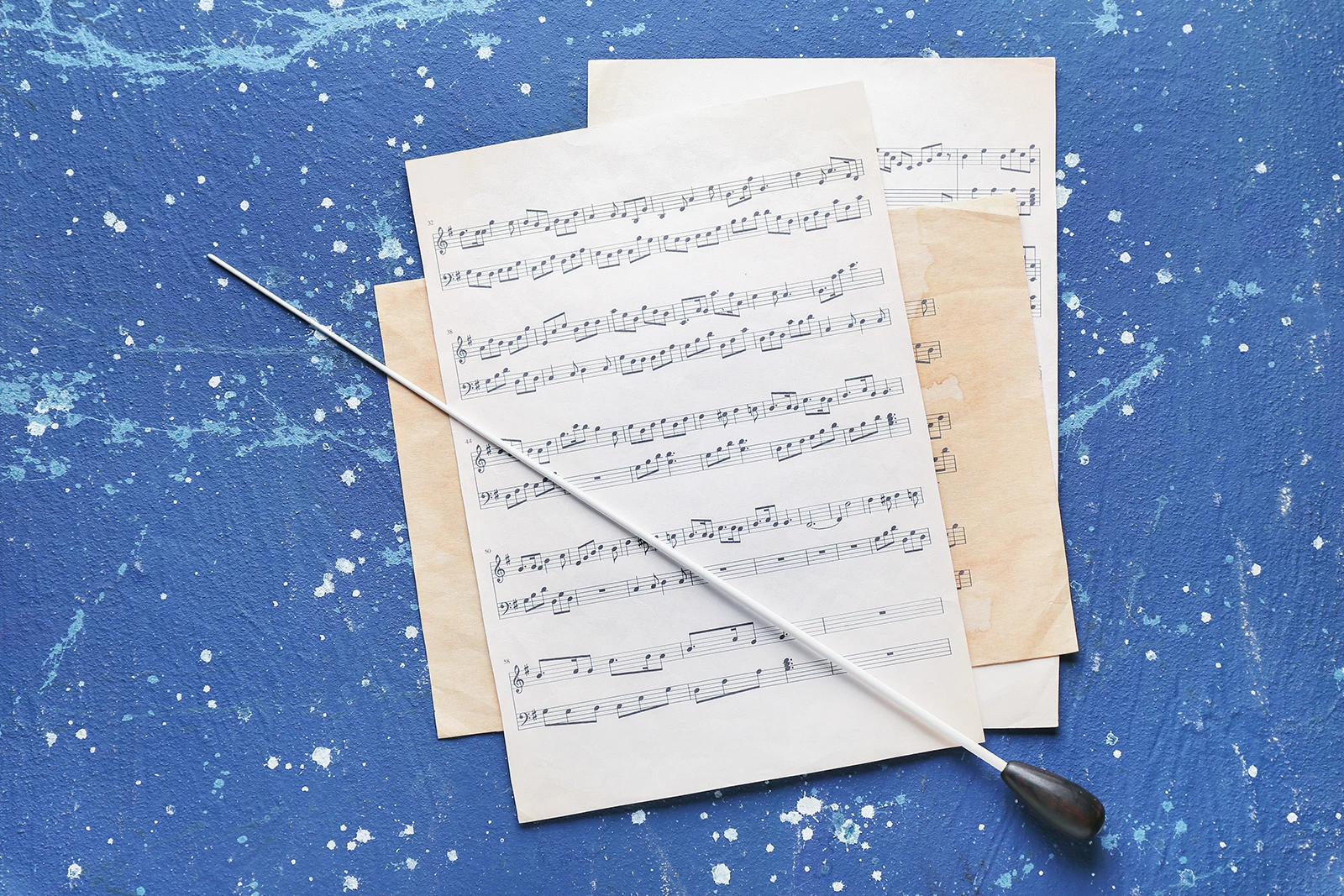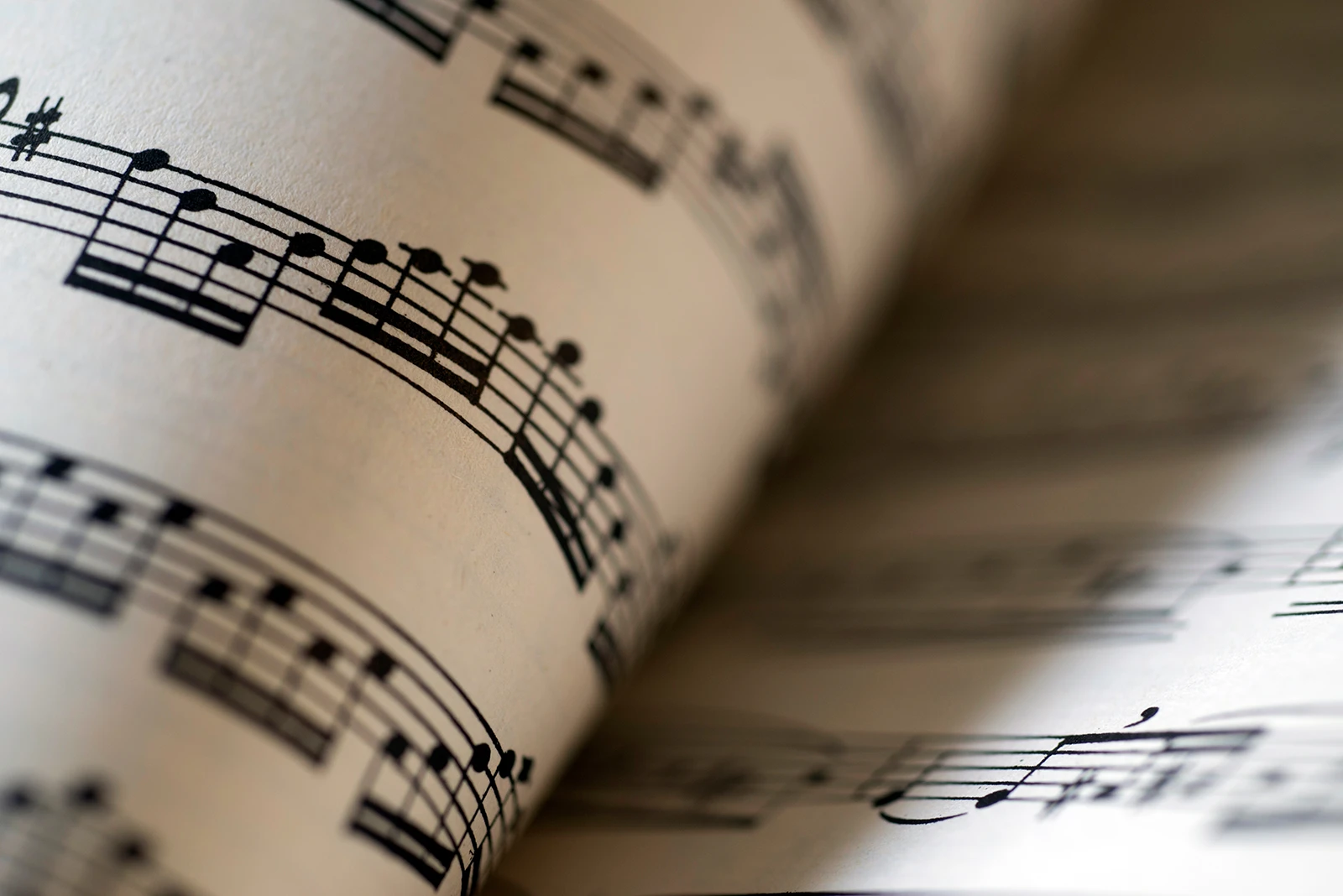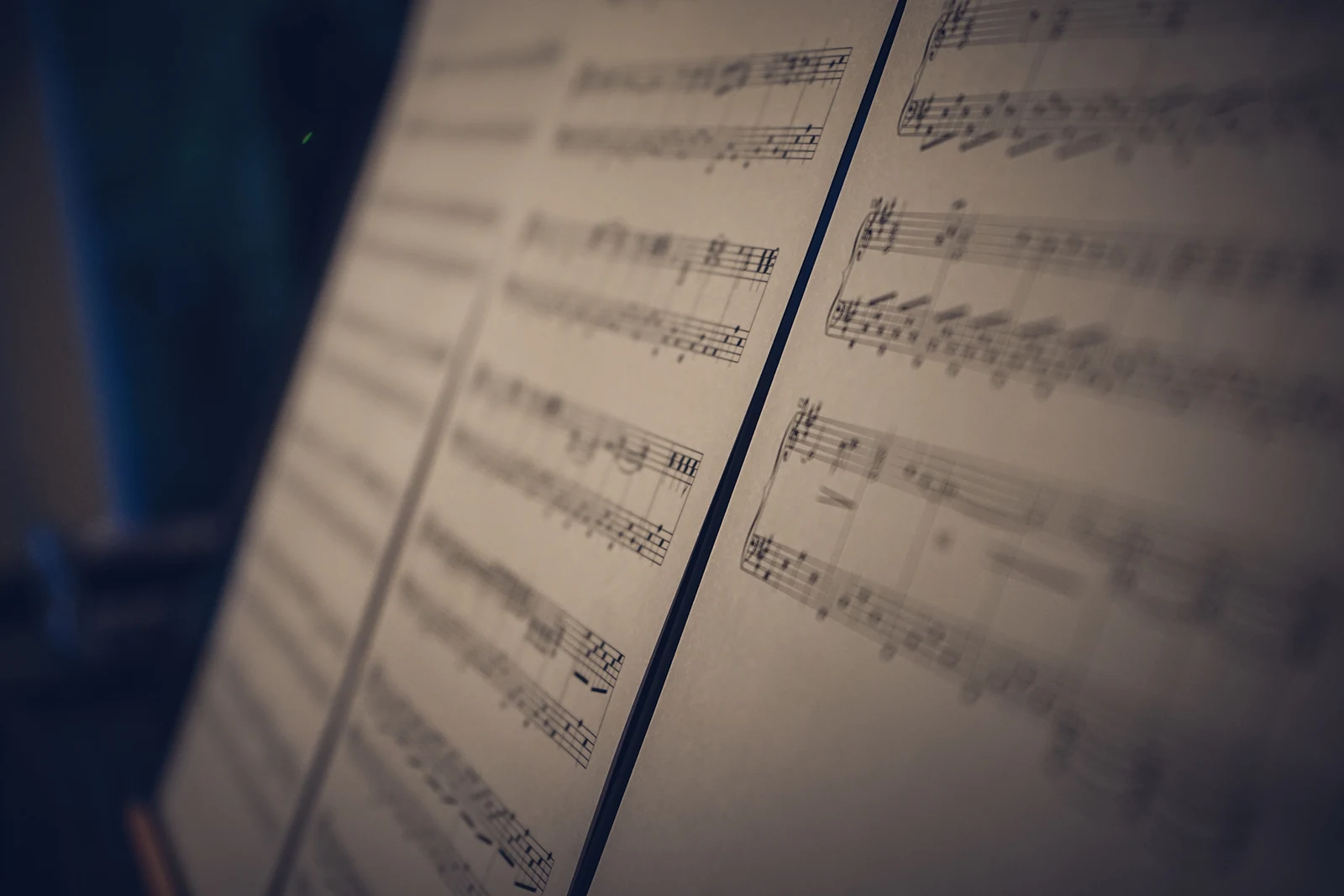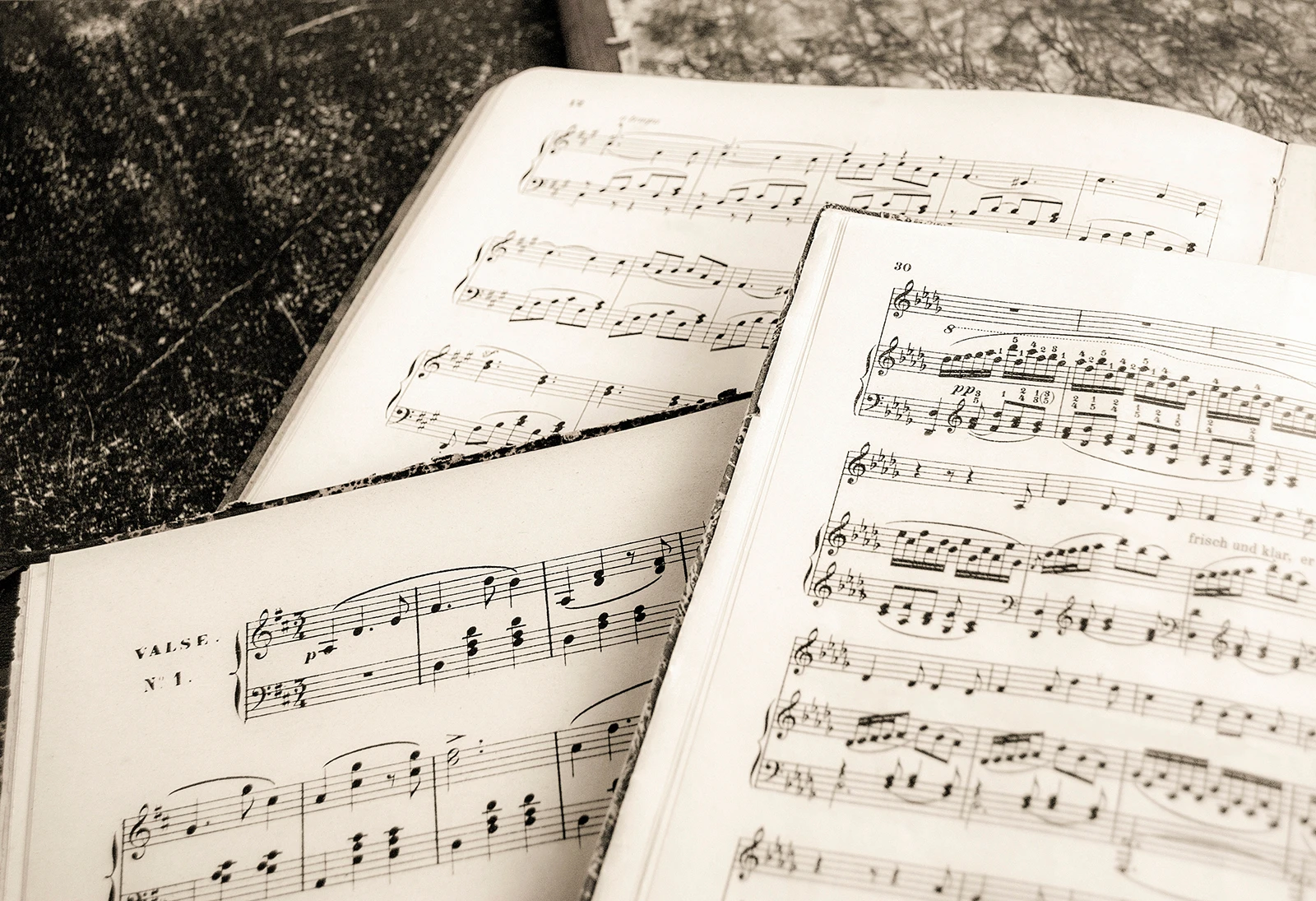- In my 25 years as a collegiate instructor, I have had the wonderful opportunity to interact with a large number of bassoonists at various ages and stages of development.
- During these interactions, I observed that the students that were having difficulty with the instrument were struggling with many of the same issues.
- The goals of this clinic are not only to provide solutions to the most common challenges on the bassoon, but also to give music educators the confidence to identify, diagnose, and assist their students, leading to happy bassoonists and conductors!
Posture / Instrument Position / Seat Strap
- Have your students use a seat strap as opposed to a neck strap or shoulder harness
- A properly supported bassoon should equally distribute the weight of the instrument between the hands, allowing the left and right thumbs to perform with maximum efficiency.
- If the student has large hands, a hand rest may be used to assist in supporting the instrument as well as preventing the right palm from getting too close to the boot joint.
- The seat strap is placed at the front quarter of the chair – allowing the elbows to be in front of the torso and the shoulders to drop.
- When seated, the player’s back sh0uld touch the back of the chair with their hips as far back in the chair as possible.
- Feet are flat on the floor.
- The bassoon should form half of an “X” across the player’s body.
- Always bring the bassoon to you, not you to the bassoon – the player’s shoulders should be parallel to the instrument.
- The bassoon, bocal, and reed are at the proper height when the reed touches the space between the players chin and lower lip as they are looking straight ahead.
- The player then dips their head to access the reed, slightly looking down at the instrument.
Embouchure Formation / Diagnostics
- Having students produce a low whistle, or an attempt to whistle, is an excellent way of forming the basic embouchure for the bassoon.
- Hooded sweatshirt/drawstring purse example also works well.
- Pull the corners of the mouth towards the center of the face, making the opening as round/oval as possible. The jaw will slightly be dropped.
- The goal of the bassoon embouchure is to gently hold the reed with equal pressure from all sides of the mouth.
- Equal pressure from all sides of the mouth allows the reed opening to be at its maximum, which is the ideal for the majority of bassoon playing.
- To assess if an embouchure is formed correctly (and also if the reed is adjusted correctly), insert the scraped part of the reed so that approximately 2/3 of blade is inside the mouth.
- Place the tip of the tongue on the tip of the reed, then, release the tongue letting the air into the reed. If the reed is properly soaked and adjusted, a mix of several frequencies will occur. The pitch of this “crow” can be anywhere from an Eb to a F.
- If the student can only produce a high pitch on the reed, check that their corners are pulled towards the center, their jaw is dropped, and that they are putting a lot of air into the reed (I often tell students to have the crow of the reed touch the opposite wall). If all they get is a high pitch, see Reed Adjustments below.
- If the student can only produce a low pitch, this in and of itself is not a bad thing – it just means that the reed is very soft and will not be reliable above the bass clef.
- Once the student can produce a crow on their reed, have them move it back and forth in their mouth continuing to produce the crow. If they can perform this task, their embouchure is set!
Articulation / Tonguing
- For the vast majority of tonguing on the bassoon, articulation is done on the tip of the reed just behind the tip of the tongue.
- One taste bud on the reed!” Many beginning bassoonists use too much tongue tissue to articulate, which will eventually compromise their tonguing speed and variety of articulation styles.
- Excessive jaw movement should be eliminated as it will rapidly change the aperture of the reed, as well as limit the velocity of single tonguing.
- Take care that the student is not “breath” tonguing or anchor tonguing.
- Legato tonguing
- “Dah” syllable
- 99% air / 1% tongue
- Can also tongue the bottom blade of the reed for a seamless legato stroke, as well as the corner of the reed.
- Staccato tonguing
- “Tah” syllable
- When introducing staccato to a student (or any other style), be sure that they are not ending the note by placing their tongue on the reed. The tone should be stop by stopping the air with proper breath support.
- Most students get into trouble with staccato (or other styles) when they use a “Tut – Tut” syllable, rather than a “Tah – Tah” syllable. A “Tut” syllable will create a loss of resonance, whereas a “Tah” syllable will leave more sound in the hall. Also, using multiple “Tah” syllables minimizes the amount of time spent on the tip of the reed.
- The bassoon is capable of producing the shortest staccato of almost any wind instrument (think Sorcerer’s Apprentice – Dukas), so care must be taken when playing a detached sound that contains more tongue than tone.
- In specific situations, stopping the tongue is permissible if it fits the character of the music (ex. Stravinsky Octet)
- Marcato/Pesante/Weighted tonguing
- “Tah” syllable utilizing more tissue of the tongue
- Start the tone a bit further back from the tip
- Increasing Single Tongue Speed
- Elements of a fast single tongue: fast air, straight tongue, using the tip of the tongue
- “Dah” syllable – think of it as fast tenuto tonguing
- Increase velocity on one note – then introduce the fingers
- Alfred Rose method (principal clarinet – Vienna Symphony)
- Take open F / metronome at 40
- Quarter / Eighths / Triplets / Sixteenths / Quintuplets / Sextuplets
THE REED!
- Yes, we are going to talk about reeds!
- No, it isn’t going to be scary!
- Yes, you can do this!
- If your bassoonist is having problems with the response of their reed, check and adjust (if needed) the following:
- Measure the distance from the top of the top wire to the tip of the blade. If it is not 30mm, gently move the wire back until that measurement is achieved (do this with a fully soaked reed). You can go as long as 31mm without disastrous effects, depending on how long/strong the overall reed is.
- Look through the reed from the wrapped end to see if there is anything blocking the air (even a small shard of cane can make a big difference). If there is, take a small rat tail file and gently clear it out.
- Bassoon reeds should fit on the bocal anywhere from 7 to 10mm. Going on further than 10mm isn’t a problem, but less than 5mm can be. If that is the case, take a reamer (see Recommended Tools) and gently remove material from the inside of the tube a few twists at a time. Check this measurement frequently and use your rat tail file to remove any debris.
- Pliers are a wonderful way of adjusting reeds since any wire adjustment can be put back if it doesn’t work! In general, adjustments can be made through the following (stolen from Ben Kamins, professor of bassoon at Rice University):
- Top Wire
- Round Flatten
- Opens Closes
- Darkens Brightens
- Adds Resistance Lessens Resistance
- Strengthens Weakens
- Sharpens Pitch Flattens Pitch
- Middle Wire
- Round Flatten
- Closes Opens
- Darkens Brightens
- Adds Resistance Lessens Resistance
- Strengthens Weakens
- Sharpens Pitch Flattens Pitch
Voicing / Intonation / Tone / Harmonic Series
- Assuming that the embouchure, reed, bocal, and bassoon are all in working order, playing in tune on the bassoon is accomplished by the following:
- Each register of the bassoon has very predictable intonation tendencies that can be addressed by changing the vowel shape inside of the mouth which in turn changes the size of the oral cavity. This procedure is known as voicing.
- Voicing will slightly change the aperture of the reed, which will either dampen some parts of the reed (playing in the high register for example), or maximize the vibrational capacity of the entire reed (playing in the lowest register). Therefore, a properly made and adjusted reed is critical to playing in tune.
- There will be individual pitches in each register of the bassoon that will have slightly different tendencies than notes that are even one half step apart. In any case, changing the size of the oral cavity is the primary vehicle for adjusting intonation.
- Moving the bocal does nothing for the intonation of the instrument. However, if the instrument is significantly sharp, or flat overall, a change in bocal is warranted to correct this issue.
- Heckel/Puchner/Moosman/Leitzinger 2 bocal and a Fox 3 bocal: A=440
- Heckel /Puchner /Moosmann/Leitzinger 1 bocal and a Fox 2 bocal: A=442
- Intonation Tendencies on the Bassoon
- Pedal Bb to G below the bass clef: Sharp (“Ah” vowel) – very open reed aperture
- Taking in less reed can help with intonation as well as extremes in volume and rapid articulation. Since the very sides of the reed are exposed, the sound will be more “reedy” but much easier to manipulate
- Low Ab to A on top of bass clef: reasonably stable with a few exceptions: (“Eh” vowel”)
- Second space C# – can be flat if the reed is too long
- Third space E – can be flat if the reed is too long or the tip too thin
- Fourth Line F (open) – tends to be bright and sharp
- F#, G and Ab – all ½ hole notes that tend to be sharp
- A on top of bass clef to second ledger line F: flat (“Ee vowel)
- This register of the bassoon is the most resonant – the vast majority of the major orchestral excerpts for bassoon are found here.
- The bassoon becomes more resistant beginning with A on top of the bass clef. Therefore, when playing a passage that utilizes multiple registers of the bassoon, you will need to produce a subtle crescendo for an even sonority (F major scale example)
- The C# just above the bass clef is sharp when using the proper fingering. The player will need to switch to an “Eh” or “Ah” vowel to voice this pitch a bit lower.
- E and F above the bass clef are very resistant, and in some cases a harmonic can occur if there is not enough support for these notes. In those cases, slightly closing the aperture of the reed will most often fix this problem.
- Second ledger line F# to third space C#(treble clef): Sharp (“Oh” vowel)
- The upper register of the bassoon is notorious for having student close the aperture of the reed to facilitate playing these notes. While closing the aperture does make these upper notes speak easier, tone and intonation are vastly compromised. Finding a balance between abdominal support and embouchure support is key here.
- High D and above: Flat (can close the aperture of the reed a bit)
What are the Foundations of a Characteristic Bassoon Sound?
- A properly formed embouchure that has the flexibility to adapt to all registers of the bassoon
- The use of different articulation styles to meet the demands of the music
- The use of voicing to address general intonation tendencies across the multiple registers of the bassoon, as well as individual pitches specific to a given instrument
- The judicious application of vibrato as a vehicle of musical expression
- A knowledge of the abdominal muscles responsible for generating airstream velocity
- A bassoon reed that is properly adjusted for intonation and response
What are the Variables Associated with Tone Production on the Bassoon?
- Instrument
- Fox / Heckel / Puchner / Moosmann / Schreiber, etc.
- Materials Used in Construction (Wood Species)
- Finish (Different types of stain, varnish, acrylic)
- Bore design (long, short, thick wall, thin wall)
- Bocal (bore design, length, wall thickness, materials used in construction)
- Reed Shape
- Reed Scrape (wedge, parallel scrape, modified parallel scrape, etc.)
- Thickness of a Performer’s Lips
- Size of Oral Cavity of a Given Performer
- Personal Concept of Sound (different teachers, ensemble sounds, etc.)
Octave Keys
There are five pitches that require the use of these keys operated by the LH thumb on the tenor joint: A, Bb, B, C, and D (beginning with the top line on the bass clef).
- These keys can be found on the tenor joint of the bassoon and all are operated by the LH thumb:
- D
- Bb/B/C
- A
- C#
- Whisper key
- Some bassoons may not have all of these keys – see Octave Key Technique
- These keys have several names (see above), but they actually function as octave keys for these specific pitches.
- When teaching the use of these keys, it is very important to stress that they are part of the fingering. If these notes are taught without these keys, it is very difficult (but not impossible) to integrate them into a bassoonist’s technique.
- Disciplined use of these keys will solve a host of technical problems created by some of the acoustic idiosyncrasies of the instrument. It is worth the investment of time and effort!
Octave Key Technique
- These octave keys are needed in the following situations:
- When A, Bb, B, and C are articulated
- When slurring up to A, Bb, B, C, and D
- When slurring down to A, Bb, B, and C
- The only exception to this rule is when slurring from a half hole note to the pitches listed above. In that case, the octave key is not required as the half hole acts an octave key bringing the bassoon up to the next harmonic series.
- Some bassoons, especially found in secondary schools, will not have a high D key (fourth key above the whisper key in the LH). In that instance, it will be necessary to legato tongue any slurred intervals up to D.
- Each of these keys are used for a specific pitch (see below the keys operated by the LH thumb on the tenor joint).
- D
- Bb/B/C
- A
- C# key
- Whisper key
- For ascending and descending slurred intervals using the whisper key.
- Begin the process by lifting the LH thumb off of the whisper key. Provided that the bassoon and the reed are in good working order, and if the oral cavity size does not change, the beginning pitch you are on will not jump up or down an octave.
- In a relaxed motion, depress the specific key associated with that pitch until it hits the “bumper” and completely opens up the tone hole. This motion should be done to create the requested rhythm on the page.
- Once the upper note speaks, the key can be released for the duration of the pitch, or released if that is the player’s preference.
- Most often, particularly in ascending slurs, a change in voicing is needed to facilitate the slur.
- A, Bb, B, C and D are flat in pitch and require a vowel shape of “Ee” inside the oral cavity when slurring to the top note.
- In addition, this register of the bassoon is a bit more resistant, so the abdominal muscles will need to support the ascending interval as well.
- For all other ascending and descending slurs, a relaxed motion of the LH thumb depressing the octave keys will result in a smooth interval with no interruptions.
- For articulated pitches involving the octave keys (A/Bb/B/C), the motion of the tongue touching the reed and the opening of the key must be simultaneous.
- For repeated articulations on a specific note, holding the octave key down is the best solution.
Third Space Eb / Fourth Space G / Tenor C# / Tenor F#
- For the vast majority of pitches that bassoonists play in secondary school, these five notes often are the most “knarly”. A description of each of these notes follows, accompanied by a pdf fingering chart from Fox Products.
- Third space Eb can be played in a variety of ways. My favorite fingering is LH 1, 3, and my LH pinky putting down the low Eb key.
- Many fingering charts ask bassoonists to also put down the RH thumb on the back Bb key and RH 1 or 2 down as well. While this can be a good fingering for soft passages, it can create fingering issues for rapid passages across this note. Furthermore, this fingering can be used as a crutch for a reed that is not properly scraped. Bassoon reeds that are too strong in the front ¼ of the blade can be very sharp on this note.
- That being said, some bassoons cannot play this note in tune without some help in the RH, so your mileage may vary with each bassoon you come across. My advice: try LH 1 and 3, and if that is too sharp/unstable, add RH thumb and RH first finger (RH 2 in this combination can be very sharp on many instruments)
- Fourth space G – always use the whisper key, LH ½ hole in the first finger, and use your LH pinky to depress the low Eb key.
- Tenor C# can present a few challenges. It can be a very bright note which can soar sharp in pitch depending on the instrument.
- I have found that the best thing to do when introducing this note is to have the student try two of the three fingerings for this pitch.
- The first fingering is LH 1, 2, 3, and LH thumb on the C# key and low D key. This fingering is muted on some instruments but projects very well on others.
- The second fingering is LH 1, 2, 3, LH thumb on the C# key, and RH 2, 3, and pinky on the low F key. This fingering projects very well but can be sharp and bright.
- Have your student compare how these pitches tonally match the surrounding pitches of B and C, as well as D and Eb. Usually one will come out as the clear winner.
- In my over 30-year career as a bassoonist, I have seen more variations to tenor F# than I care to admit!! Some of this can be due to poor fingering charts, as well as other factors.
- Normally, it is my philosophy to pick one fingering for a note and stick with it as that simplifies technique. However, the acoustical nightmare that is the bassoon often wrecks havoc with this philosophy – in fact, I use at least four different fingerings for this note depending on the context!
- The fingering that I teach first and use the most is the “French” fingering, as it is related to the French bassoon. It has the best sound, pitch, and can give a young player a lot of confidence to how easy it responds. It is LH 2 and LH pinky on the low Eb key, and RH 1, 2, and pinky on the low F key. Believe it or not, it is an overblown low F!!!!
Left Hand Pinky Resonance Key
- When playing second ledger line E and higher on the bassoon, always have the LH pinky hold down the low Eb key. It provides a great deal of resonance to these pitches.
Instrument, Reed, and Bocal Care
- Swab out the instrument after each use. Having a tenor joint and boot joint silk swabs make this process very easy.
- Get a bocal brush and scrub out the bocals one a month with hot soapy water.
- Protect the tip of the bocal – do NOT carry around the bocal with the tip inserted into the tenor joint! Put it in the bell instead!
- The safest place for the bassoon when not in use is in the case. Try to avoid laying the instrument down across a chair or case if at all possible. If the instrument is not going to be played for several hours after a practice session, swab it out and put it away.
- Once a month, vacuum out your bassoon case to prevent dust and other particles from getting trapped underneath the pads. This can cause leaks, particularly in the low register. I have a keyboard vacuum that works great for this!
- If you have a wooden bassoon, put orange peels in the case during the winter months. It will keep the wood hydrated, preventing cracks and other issues, and you’ll have the best smelling bassoon on the block!
- Proper storage and rotation of bassoon reeds will keep your bassoonist extraordinarily happy! Do not store a bassoon reed in the vile it came it! It will turn vile!!! Either purchase a bassoon reed case (see Equipment Recommendations) or make your own!
- Take an Altoids box, clean it out, poke holes in the top, line it with a paper towel. Done!
- Keep your reeds clean after each playing session: 1) dip the reed in water, 2) wipe the blade on your pantleg, 3) dip the reed back in the water, 4) put it away!
Recommended Equipment
- Round (“Rat tail”) file and Pliers – hardware store
- Bocal Brush
- Seat Strap
- Tenor Joint Swab – MMI, MM, CRD, F
- Boot Joint Swab
- 6’ metal ruler
MMI – Midwest Musical Imports
MM – Miller Marketing
CRD – Charles Double Reed
F – Forrests Double Reed







